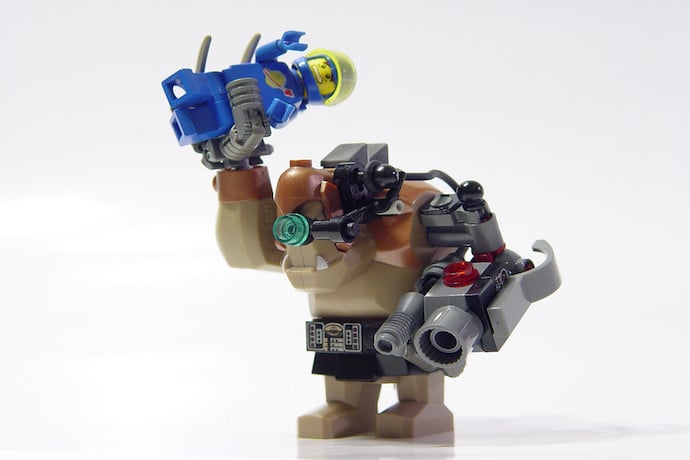The term Cybernetics conjures up images of people with robot limbs and computer implants in their brains. But its origin dates back to way before the computer age and, interestingly enough, it also has potential for the future in helping us to build better artificial intelligence.
The word “cybernetics” comes to us from Latin, by way of Greek, and has the same root as government: the Latin for “good steering”. But as a field, it is actually about the study of how to build systems that respond to change and remain stable and able to accomplish their goals over time. If that sounds really broad, it’s because it is.
RSVP
The concept of a “feedback system”, one that responds to its environment in some way, can be applied to almost anything. The “hello world” of feedback systems is called a bimetal thermostat: a physical thermostat that uses two different kinds of metal smooshed into each other. As the temperature changes, the two metals expand differently. As the temperature rises, the metals curl, and, as it cools, the metals flatten out. This means that once the temperature gets hot enough, the switch will open and electricity will stop flowing into the heater. When the switch gets cold, it will close and electricity can flow again.
This is a very simple, albeit very cool (no pun intended), example. But it demonstrates the idea of “feedback”. What are other examples of feedback systems we can apply to the theory of cybernetics? Well, everything from building physical systems like that thermostat, to how you introduce species into an environment to control pests (biocontrol), to how you run entire economies. A little mind-blowing, but if you think of a nation’s economy or even the whole world as a system meant to produce things we need, then it absolutely is a feedback system and, thus, a part of cybernetics.
Cyber Solution Dethroned
There was an attempt to put this idea into practice fifty years ago in Chile. This country had just elected a new president, Salvador Allende, on the promise of an ambitious plan to make the country more equitable and fair. Part of that meant trying to re-organize the economy: changing how production works in response to the needs of the people. Fernando Flores was the person put in charge of this reorganization and he was really interested in the field of cybernetics. So over the next couple of years, the Chilean government started to implement something called the CyberSyn system, the centerpiece of which was to be a big, circular, computerized control room where a council of people could get up-to-date information about resource harvesting, production, and the needs of the country.
Again, this was fifty years ago, long before the modern internet, and long before the widespread adoption of computers. The world never got to see how well CyberSyn worked, though, because the Allende administration was overthrown by the dictator Pinochet in 1973. Fernando Flores managed to eventually flee Chile and continued working on ideas connecting cybernetics to computers and how to make computers more useful for us. In fact, he wrote one of my favorite books on the topic: Understanding Computers and Cognition.
That was history, but what about the future? This is where things get really exciting.
AI Improv
In current AI and machine learning, we don’t really have feedback. That’s one of the reasons why I think calling it machine “learning” is misleading: machine learning involves having a program that finds patterns in data, and those patterns are useful, but once the pattern finding is done, it’s done. Today, there is a kind of machine learning called reinforcement learning that responds to feedback. However, it’s still limited in that you have to pre-define what the feedback will look like. It only really affects how the program will make decisions when it’s confronted with the same choice in the future, not what decision it makes right now.
What we really want in the future is a system capable of responding very generally to feedback from the environment and having the ability to adapt its decisions in the moment. To do that, researchers are starting to take inspiration from cybernetics yet again and are even working out new mathematical theories of feedback systems. All of this work is in its infancy, but it might be a mainstream approach to making AI in just a few years.
Learn More
Bimetal thermostats
https://www.vastrength.com/how-bimetal-thermostat-capillary-thermostat-work/
Cybersyn
https://www.newyorker.com/magazine/2014/10/13/planning-machine
Stanford robotic exoskeleton
https://www.technologyreview.com/2022/10/12/1061189/stanford-robotic-exoskeleton/amp/
What is cybernetics?
https://en.wikipedia.org/wiki/Cybernetics
Cybernetics
https://www.ntnu.edu/itk/what-is
Definition of Cybernetics
https://www.merriam-webster.com/dictionary/cybernetics
What is a Cyborg?
https://www.techopedia.com/definition/15651/cyborg
Cybersyn
https://en.wikipedia.org/wiki/Project_Cybersyn
Project Cybersyn
https://99percentinvisible.org/episode/project-cybersyn/
Thermostat facts for kids
https://kids.kiddle.co/Thermostat
How a Thermostat works
https://www.youtube.com/watch?v=q0rQb4gAtrs

